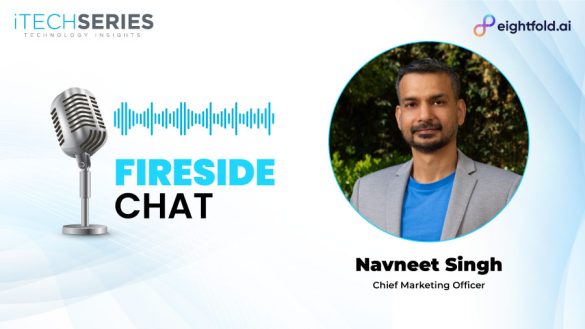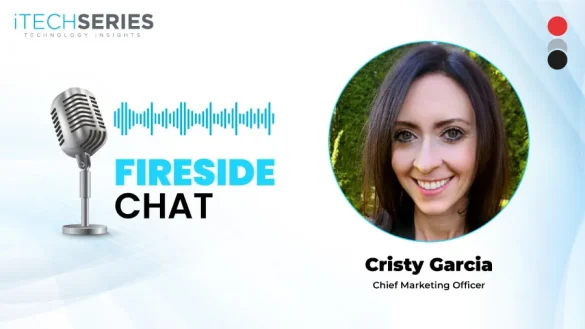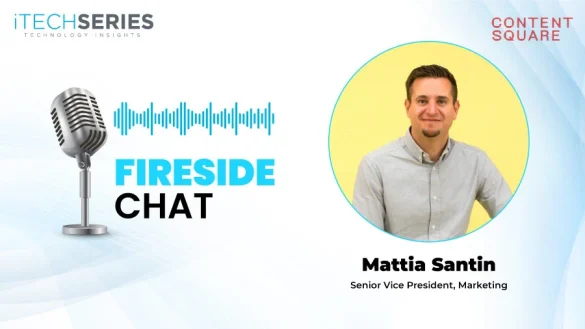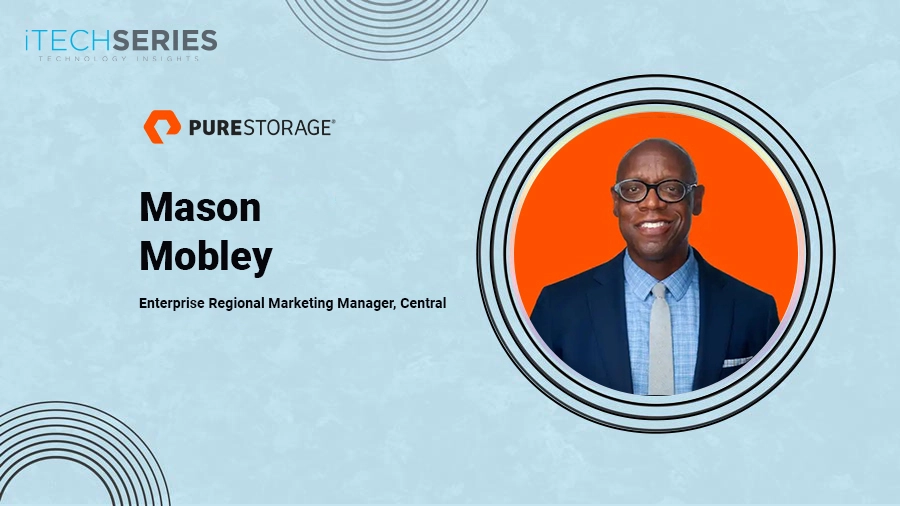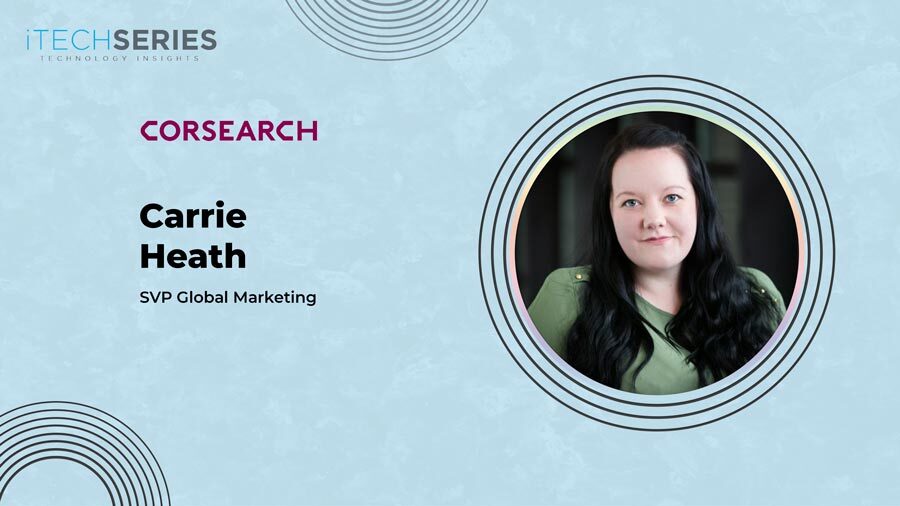Annie Arora, Account-Based Marketing Manager at Icertis, brings extensive experience in ABM, customer marketing, and integrated campaigns. She shares insights on aligning marketing with revenue, driving personalized engagement, and building strategic programs that accelerate pipeline growth and deepen customer relationships across global markets.
Welcome to the interview series, Annie. Could you please tell us more about yourself and your marketing journey?
Thank you! I’m delighted to be part of this series.
My marketing journey began at Cvent, where I joined as an Internet Research Specialist. Over the years, I grew within the organization, eventually leading customer marketing initiatives. That foundational experience sparked my interest in customer engagement and advocacy, and I’ve since worn multiple hats across marketing functions, most notably as a customer marketer and an account-based marketing (ABM) specialist.
After Cvent, I took on roles at Cognizant and Zycus, where I led integrated marketing campaigns for marquee clients and global events, built loyalty and engagement programs, and executed ABM strategies targeted at high-value accounts. These roles gave me a 360-degree view of how strategic marketing can influence both customer satisfaction and pipeline acceleration.
Currently, I lead the ABM strategy for APAC and EMEA at Icertis. My role involves crafting highly personalized marketing campaigns that align tightly with sales objectives and customer needs. What I enjoy most is being able to blend creativity, data, and collaboration to deliver impact—whether it’s expanding customer relationships or influencing multi-million-dollar deals.
Throughout my career, I’ve remained passionate about creating meaningful customer experiences and driving growth through insight-led marketing.
How has marketing’s role evolved within an integrated revenue organizational structure?
Marketing’s role has significantly evolved—from being seen primarily as a brand-building or lead-generation function to becoming a strategic growth driver tightly aligned with revenue goals.
In today’s integrated revenue structures, especially within B2B SaaS organizations, marketing is no longer working in isolation. It’s deeply interwoven with sales, customer success, and product teams to drive full-funnel impact. The focus has shifted from just generating MQLs to influencing pipeline velocity, deal acceleration, customer retention, and expansion.
In my own experience, especially while leading ABM and customer marketing, I’ve seen how marketing acts as a bridge between sales and customer success—crafting personalized engagement strategies that resonate with both prospects and existing customers. ABM has enabled us to take a highly targeted approach to revenue generation, while customer marketing ensures that we’re not only acquiring new business but also nurturing loyalty and advocacy from existing customers.
Data, technology, and alignment have become key. We now have better visibility into the buyer journey and can tailor our messaging and tactics accordingly. Ultimately, marketing’s success is measured by its contribution to revenue and customer lifetime value—something that reflects its strategic position in today’s integrated revenue engine.
“Marketing’s role has significantly evolved—from being seen primarily as a brand-building or lead-generation function to becoming a strategic growth driver tightly aligned with revenue goals.”
What are the key factors for successfully executing integrated marketing campaigns for high-value accounts?
Though there are many factors contributing to a successful campaign, as per my experience, it hinges on four core pillars:
- Sales and Marketing Alignment: A strong partnership with sales is non-negotiable. Collaborating on campaign goals, account selection, and messaging ensures both teams are working toward shared revenue goals. Regular syncs and a unified account plan help maintain momentum and accountability.
- Insight-Driven Personalization: Leveraging intent signals, firmographic data, and buying stage insights allows us to deeply understand each account’s needs. This intelligence drives hyper-personalized messaging and content—tailored to individual stakeholders and buying committees.
- Multi-Channel Orchestration: Successful campaigns engage accounts across multiple touchpoints—from emails, paid media, and content hubs to executive outreach, events, and direct mail. Coordinating these efforts ensures a consistent and immersive experience throughout the buyer’s journey.
- Measurement and Optimization: Defining clear metrics tied to pipeline and revenue influence is key. Equally important is gathering feedback from sales and using real-time performance data to iterate quickly and optimize.
How can marketers customize their programs for different customer profiles using the three core pillars of demand generation: accounts, personas, and segments?
Customizing programs for different customer profiles starts with a deep understanding of the three pillars—accounts, personas, and segments—and using them in tandem to drive meaningful, personalized engagement. Here’s how:
- Accounts–Prioritize and Personalize
Each account has its own set of priorities, challenges, and buying dynamics. By using firmographic data and intent signals, marketers can tailor messaging, content, and outreach strategies to align with the specific goals of that account. For high-value or strategic accounts, this may even involve creating bespoke campaigns or co-branded experiences in collaboration with the sales team. - Personas–Speak to the Decision-Makers
Within each account, multiple stakeholders influence the buying decision. Customizing programs based on persona roles—like procurement leaders, IT heads, or finance execs—ensures that messaging addresses their unique concerns and KPIs. For example, while a CFO may care about cost optimization, a CPO might prioritize risk reduction and compliance. - Segments–Scale with Relevance
At the segment level—such as industry, geography, or company size—marketers can create scalable campaigns with tailored value propositions. This is especially useful for 1: few and 1: many ABM, where messaging remains personalized but operationally efficient. Segment-level customization helps deliver relevance at scale while maintaining a level of precision.
By integrating these three pillars, marketers can ensure that their programs not only capture attention but also build deeper resonance with target audiences—ultimately increasing engagement, accelerating pipeline, and improving win rates.
Please tell us about your most memorable marketing campaign experience so far.
One of the most memorable campaigns of my career was during my time at Cognizant, where I led an integrated marketing initiative to amplify a major Comcast deal win. This wasn’t just a celebration—it was a strategic effort to convert a marquee win into broader market influence and pipeline growth. We built a 360-degree campaign that spanned digital engagement, sales enablement, personalized outreach, and executive conversations. Here’s how we approached it:
- Strategic Content Foundation
We crafted a strong narrative around the Comcast win, showcasing Cognizant’s expertise in transforming customer experience in the media & telecom space. This included a detailed customer success story, thought leadership blogs, and tailored sales collateral. - 1:1 ABM Campaign
We launched a 1:1 ABM campaign targeting key personas in Comcast. Using PathFactory, we delivered personalized content journeys based on personas and buying stages—ensuring every interaction was relevant and timely. - Personal On-Site Workshops
To further engage priority accounts, we conducted personalized, on-site workshops with client stakeholders—showcasing the Comcast success playbook and co-creating solution roadmaps aligned to their business challenges. This built trust and positioned Cognizant as a transformation partner. - Sales Enablement and Executive Engagement
We empowered the sales team with battle cards, win wires, and email templates. Also personalized our outreach to Comcast decision-makers, highlighting parallels between their challenges and the Comcast success story.
This campaign is especially memorable because it brought together strategic storytelling, high-touch engagement, and strong sales alignment. It ultimately influenced over $150M in new pipeline and set a benchmark for how integrated ABM can drive real business outcomes.
How can marketers leverage customer events to support marketing goals such as brand awareness, engagement, and revenue growth?
Customer events are powerful levers for achieving a range of marketing goals when strategically planned and executed.
- Boosting Brand Awareness
Events position your brand as a thought leader by showcasing innovation, customer success, and industry insights. Flagship events like Zycus Horizon or Cvent Connect significantly elevated our brand presence across key accounts. - Driving Deeper Engagement
They offer direct, personalized interaction with customers—strengthening relationships, fostering loyalty, and turning satisfied users into advocates through panels, roundtables, and success stories. - Fueling Revenue Growth
Events provide a high-touch platform to introduce new solutions, uncover upsell/cross-sell opportunities, and accelerate deal cycles—especially when marketing and sales work in tandem. - Generating Content and Insights
Customer events also yield rich insights and reusable content—from session recordings to customer testimonials—that amplify impact beyond the event itself.
With the right strategy, customer events go far beyond networking—they become key drivers of awareness, engagement, and pipeline growth.
What are some of the emerging trends that will shape ABM strategies in the years to come?
ABM is rapidly evolving, and several emerging trends are set to redefine how marketers engage high-value accounts:
- AI-Driven Personalization
AI and predictive analytics are enabling deeper account insights and helping marketers deliver hyper-personalized experiences that adapt in real time to buyer behavior and intent signals. - Dynamic Content Targeting
Marketers are increasingly using dynamic content to tailor messaging at scale—serving personalized content based on account, industry, persona, and stage in the buyer journey. This ensures relevance across all touchpoints, without sacrificing efficiency. - ABM and Customer Marketing Convergence
ABM is expanding beyond net-new acquisition to include cross-sell, upsell, and advocacy—creating a continuous value loop across the customer lifecycle. - Signal-Based Targeting and Timing
Using real-time intent signals and behavioral triggers, marketers can better prioritize accounts, tailor outreach, and launch campaigns at the right moment for maximum impact.
Together, these trends signal a shift toward more intelligent, scalable, and customer-centric ABM strategies—where relevance and timing are everything.
How do you evaluate the effectiveness of ABM campaigns, and which key metrics do you prioritize?
Evaluating ABM effectiveness requires a shift from traditional volume-based metrics to deeper, account-centric indicators tied to engagement, influence, and revenue impact. I focus on a blend of qualitative and quantitative metrics across the buyer journey:
- Account Engagement
We track how deeply and frequently target accounts are interacting with our content, channels, and campaigns. Metrics like account-level website visits, content downloads, event participation, and time spent help gauge interest and intent. - Pipeline Influence and Acceleration
A key success factor is how ABM campaigns contribute to pipeline creation and deal progression. We look at sourced and influenced pipeline, deal velocity, and progression across stages for target accounts. - Conversion and Win Rates
Higher conversion rates from marketing-qualified accounts to opportunities and, ultimately, closed-won deals are strong indicators of ABM success. - Customer Expansion and Retention
For existing customers, we track upsell/cross-sell pipeline and renewal influence to measure ABM’s role in deepening account value.
Ultimately, the goal is not just engagement, but meaningful progress toward revenue and relationship growth. ABM success lies in quality over quantity—and how well marketing helps move the needle where it matters most.
Where do you see AI-enabled tools playing an integral role in marketing campaign operations?
AI-enabled tools are becoming foundational to modern marketing operations, especially where efficiency, personalization, and precision are key. Here’s where they’re making the most impact:
- Audience Insights and Segmentation
Tools like 6sense, Demandbase, and ZoomInfo analyze intent data, firmographics, and buying behavior to prioritize high-value accounts and uncover hidden opportunities—making segmentation smarter and more targeted. - Personalization at Scale
Platforms like PathFactory and Drift use AI to deliver personalized web experiences, content journeys, and conversational marketing—tailored in real time based on account or persona. - Predictive Campaign Optimization
AI-driven A/B testing and performance prediction from tools like Optimizely or Marketo Engage help optimize messaging, timing, and channel mix based on what’s likely to convert best. - Reporting and Attribution
AI tools like Bizible simplify multi-touch attribution and help marketers connect campaigns to pipeline and revenue impact—driving more strategic decision-making.
As marketing becomes more data-driven and outcome-focused, AI is moving from an enhancement to an operational necessity—helping teams execute faster, personalize deeper, and continuously optimize across the full campaign lifecycle.
About Annie Arora
Annie is a seasoned marketer with over 10 years of experience specializing in Account-Based Marketing (ABM) and integrated campaigns. She has led high-impact, personalized strategies that align with business goals to drive engagement and pipeline growth. Having held key roles at Cvent, Cognizant, and Zycus, Annie currently leads ABM strategy for APAC and EMEA at Icertis, blending creativity and data to deliver measurable business impact.


